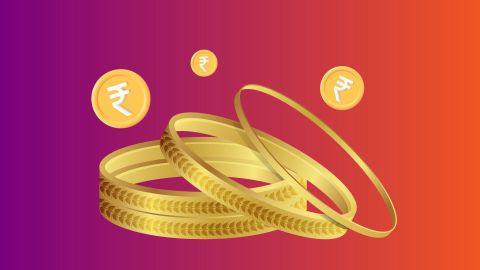Gold prices are influenced by a myriad of factors that range from economic indicators to market sentiment.
Key factors affecting gold prices
One of the primary factors is inflation. When inflation rates are high, the purchasing power of currencies decreases, leading investors to seek the stability of gold, thereby driving up its price. Interest rates also play a crucial role; lower interest rates tend to make gold more attractive as an investment, increasing its price. Supply and demand dynamics are essential too; limited gold production can lead to higher prices. Additionally, geopolitical tensions and social upheaval often result in increased demand for gold as a safe-haven asset. Lastly, currency fluctuations, particularly the strength of the US dollar, significantly impact gold prices. A weaker dollar makes gold cheaper for foreign investors, thus boosting its price.
Additionally, investment trends, such as movements in gold exchange-traded funds (ETFs), further influence gold prices by reflecting investor sentiment.
Economic factors influencing gold prices
Economic factors are crucial in determining gold prices. Inflation is a significant factor; as inflation rises, the value of currency decreases, making gold a more attractive investment to preserve wealth. Interest rates also affect gold prices; lower interest rates reduce the opportunity cost of holding gold, leading to increased demand and higher prices. Additionally, economic growth impacts gold prices; during economic downturns or recessions, investors often flock to gold as a safe-haven asset, driving up its price. Unemployment rates and consumer confidence indices can also influence gold prices, as they reflect the broader economic environment and investor sentiment. Furthermore, monetary policies enacted by central banks, such as quantitative easing or tightening, can have direct and indirect effects on gold prices by influencing inflation and interest rates.
Market dynamics and their impact on gold prices
Market dynamics play a pivotal role in shaping gold prices. Supply and demand are fundamental; limited gold production or increased demand for gold jewellery, technology, and investment can significantly boost prices. Market speculation and investor sentiment also affect gold prices; positive sentiment and bullish market trends can drive prices upward. Additionally, gold exchange-traded funds (ETFs) influence the market; substantial inflows or outflows from ETFs can lead to significant price movements. The futures market is another critical factor; trading volumes and positions in gold futures contracts can indicate market expectations and influence spot prices. Furthermore, global economic data releases, such as GDP growth rates and unemployment figures, can impact investor sentiment and market dynamics, thereby affecting gold prices.
Geopolitical and social influences on gold prices
Geopolitical and social factors significantly impact gold prices. Political instability, such as wars, conflicts, and election uncertainties, often drives investors to seek the safety of gold, increasing its price. Social upheavals, including protests and civil unrest, can similarly lead to higher gold demand as a protective measure. Additionally, international relations and trade policies play a role; tensions between major economies can cause market volatility, prompting a shift to gold. Natural disasters and pandemics also influence gold prices, as they create economic uncertainty and disrupt normal market operations. The perception of gold as a safe-haven asset during times of crisis leads to increased demand and higher prices. Furthermore, changes in government policies and regulations regarding gold production and trade can impact its availability and market value.
How does inflation affect gold prices?
Inflation has a direct impact on gold prices. When inflation rates rise, the purchasing power of currency diminishes, making gold a more attractive investment to preserve value. Investors often turn to gold during inflationary periods as it is perceived as a hedge against eroding currency value. As demand for gold increases, its price typically rises. Additionally, during times of high inflation, central banks may adopt measures such as lowering interest rates, which further boosts gold's appeal by reducing the opportunity cost of holding non-yielding assets. Historical trends show a strong correlation between inflation rates and gold prices, reinforcing gold's status as a safe-haven asset. Consequently, inflation expectations can also drive speculative investments in gold, pushing prices even higher.
Political events and their impact on gold prices
Political events have a profound impact on gold prices. Elections, especially in major economies, can lead to market uncertainty and volatility, driving investors towards gold as a safe-haven asset. Policy changes, such as tax reforms or shifts in trade policies, also influence gold prices by affecting economic stability and investor confidence. Geopolitical tensions, including conflicts, wars, and diplomatic disputes, can cause significant market disruptions, leading to increased demand for gold. Additionally, political decisions regarding gold production and trade regulations can impact its supply and market dynamics. Political stability or instability in key gold-producing countries can further influence gold prices by affecting production levels and export capabilities. Consequently, monitoring political events is crucial for understanding and predicting fluctuations in gold prices.
How do gold prices determine gold loan values?
Gold prices play a crucial role in determining the values of loans against gold. When gold prices are high, the value of gold collateral increases, allowing borrowers to secure larger loan amounts. Conversely, if gold prices fall, the value of the collateral diminishes, potentially reducing the loan amount that can be obtained. Financial institutions closely monitor gold prices to assess the risk associated with loans against gold. Higher gold prices provide lenders with greater security, as the collateral holds more value. This dynamic makes gold prices a key factor for both lenders and borrowers in the gold loan market. Additionally, fluctuations in gold prices can impact the terms and interest rates offered by lenders, further influencing the overall loan process.
Impact of gold price fluctuations on loan terms
Gold price fluctuations significantly impact loan terms, particularly the gold interest rate. When gold prices are high, borrowers can secure larger loan amounts due to the increased value of the collateral. This often leads to more favourable loan terms, including lower interest rates and longer repayment periods.
Conversely, when gold prices drop, the value of the collateral decreases, which may result in higher interest rates and shorter repayment terms to mitigate lender risk. Financial institutions continuously adjust loan terms based on gold price trends to balance their risk exposure. Additionally, substantial fluctuations in gold prices can lead to reassessments of existing loan agreements, potentially requiring borrowers to provide additional collateral or face changes in their loan terms. Thus, understanding gold price movements is essential for managing gold loan agreements effectively.








 Food & Beverages
Food & Beverages Fashion
Fashion Beauty & Personal Care
Beauty & Personal Care Health & Wellness
Health & Wellness Home & Kitchen
Home & Kitchen

 Loan Against Shares
Loan Against Shares Loan Against Mutual Funds
Loan Against Mutual Funds Loan Against Bonds
Loan Against Bonds Loan Against Insurance Policy
Loan Against Insurance Policy ESOP Financing
ESOP Financing Two-wheeler Loan
Two-wheeler Loan Loan for Lawyer
Loan for Lawyer Industrial Equipment Finance
Industrial Equipment Finance Industrial Equipment Balance Transfer
Industrial Equipment Balance Transfer Industrial Equipment Refinance
Industrial Equipment Refinance
 Smartphones
Smartphones Air Conditioner
Air Conditioner Led TVs
Led TVs Air Coolers
Air Coolers Refrigerators
Refrigerators Washing Machines
Washing Machines Laptops
Laptops

 Trading Account
Trading Account Open Demat Account
Open Demat Account Margin Trading Financing
Margin Trading Financing Share Market
Share Market Invest in IPO
Invest in IPO All stocks
All stocks Top gainers
Top gainers Top losers
Top losers 52 week high
52 week high 52 week low
52 week low
 Business Loan
Business Loan Secured Business Loan
Secured Business Loan Loan against property
Loan against property Loans against property balance transfer
Loans against property balance transfer Loan against shares
Loan against shares Home Loan
Home Loan Loans against mutual funds
Loans against mutual funds Loan against bonds
Loan against bonds Loan against insurance policy
Loan against insurance policy
 Term Life Insurance
Term Life Insurance ULIP Plan
ULIP Plan Savings Plan
Savings Plan Retirement Plans
Retirement Plans Child Plans
Child Plans Investment Plans
Investment Plans
 Get Bajaj Prime
Get Bajaj Prime
 ULIP Plan
ULIP Plan Savings Plan
Savings Plan Retirement Plans
Retirement Plans Child Plans
Child Plans Free Demat Account
Free Demat Account Invest in IPO
Invest in IPO Invest in Stocks
Invest in Stocks Margin Trading Facility
Margin Trading Facility
 Check your Credit Score
Check your Credit Score
 Bike
Bike Scooter
Scooter Electric Vehicle
Electric Vehicle Best Sellers
Best Sellers Popular Brands
Popular Brands
 New Car Loan
New Car Loan Used Car Loan
Used Car Loan Loan Against Car
Loan Against Car Car Loan Balance Transfer and Top-up
Car Loan Balance Transfer and Top-up
 Engagement Zone
Engagement Zone Game Zone
Game Zone
 Personal Loan EMI Calculator
Personal Loan EMI Calculator Personal Loan Eligibility Calculator
Personal Loan Eligibility Calculator Home Loan EMI Calculator
Home Loan EMI Calculator Home Loan Eligibility Calculator
Home Loan Eligibility Calculator Good & Service Tax (GST) Calculator
Good & Service Tax (GST) Calculator Flexi Day Wise Interest Calculator
Flexi Day Wise Interest Calculator Flexi Transaction Calculator
Flexi Transaction Calculator Secured Business Loan Eligibility Calculator
Secured Business Loan Eligibility Calculator Fixed Deposits Interest Calculator
Fixed Deposits Interest Calculator Two wheeler Loan EMI Calculator
Two wheeler Loan EMI Calculator New Car Loan EMI Calculator
New Car Loan EMI Calculator Used Car Loan EMI Calculator
Used Car Loan EMI Calculator All Calculator
All Calculator
 Hot Deals
Hot Deals Clearance Sale
Clearance Sale Kitchen Appliances
Kitchen Appliances Tyres
Tyres Camera & Accessories
Camera & Accessories Mattresses
Mattresses Furniture
Furniture Watches
Watches Music & Audio
Music & Audio Cycles
Cycles Mixer & Grinder
Mixer & Grinder Luggage & Travel
Luggage & Travel Fitness Equipment
Fitness Equipment Fans
Fans
 Personal Loan for Doctors
Personal Loan for Doctors Business loan for Doctors
Business loan for Doctors Medical Equipment Finance
Medical Equipment Finance Secured Business Loan
Secured Business Loan Loan against property
Loan against property Loan against share
Loan against share Gold Loan
Gold Loan Home Loan
Home Loan
 Smartphones
Smartphones Air Conditioners
Air Conditioners LED TVs
LED TVs Air Coolers
Air Coolers Refrigerators
Refrigerators Washing Machines
Washing Machines Laptops
Laptops Water Purifiers
Water Purifiers Tablets
Tablets Kitchen Appliances
Kitchen Appliances Mattresses
Mattresses Furniture
Furniture Music and Audio
Music and Audio Cameras & Accessories
Cameras & Accessories Cycle
Cycle Watches
Watches Tyres
Tyres Luggage & Travel
Luggage & Travel Fitness Equipment
Fitness Equipment
 Home Loan
Home Loan Transfer your existing Home loan
Transfer your existing Home loan Loan against Property
Loan against Property Home Loan for Salaried
Home Loan for Salaried Home loan for self employed
Home loan for self employed Home Loan EMI Calculator
Home Loan EMI Calculator Home Loan eligibility calculator
Home Loan eligibility calculator Home Loan balance transfer
Home Loan balance transfer
 Offer World
Offer World
 Articles
Articles
 Overdue Payments
Overdue Payments Other Payments
Other Payments
 Document Center
Document Center Bank details & Documents
Bank details & Documents Tax Invoice Certificate
Tax Invoice Certificate
 Do Not Call Service
Do Not Call Service
 Your Orders
Your Orders Hamara Mall Orders
Hamara Mall Orders

 Fixed Deposit (IFA) Partner
Fixed Deposit (IFA) Partner Loan (DSA) Partner
Loan (DSA) Partner Debt Management Partner
Debt Management Partner EMI Network Partner
EMI Network Partner Become a Merchant
Become a Merchant Partner Sign-in
Partner Sign-in
 Food & Shopping
Food & Shopping Credit Card Hub
Credit Card Hub ULIP Plans
ULIP Plans Top Gainers Stock
Top Gainers Stock Top Losers Stock
Top Losers Stock Saving Plan
Saving Plan Term Insurance
Term Insurance
 Live Videos
Live Videos





















